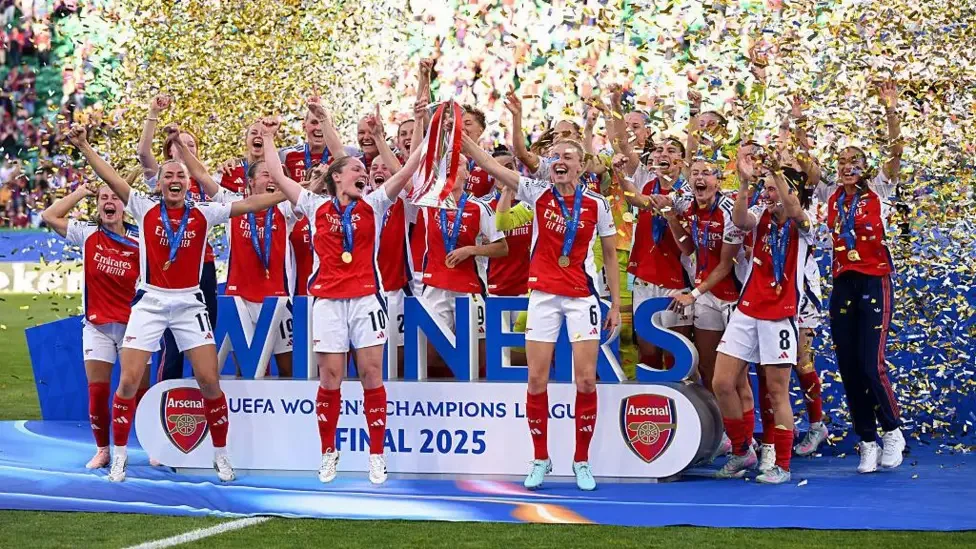FIFA’s new Women’s Champions Cup will make its debut in London early next year - a landmark moment signalling how far women’s football has come in global stature and commercial weight. From 28 January to 1 February 2026, the city will host the semi-finals, third-place play-off and final, uniting continental champions from Europe, Asia, Africa, Oceania, and the Americas in a format mirroring the men’s Club World Cup.
For Arsenal, Europe’s representative and reigning Women’s Champions League winners, it’s another high-profile chance to build global fandom - and for the capital, a statement that women’s sport now commands prime real estate in world football’s calendar.
📊 Supporting Stats:
The Women’s Champions League final drew over 50,000 fans last season at San Mamés, setting a new benchmark for continental women’s football attendance (UEFA, 2025).
The global women’s football market is projected to hit $1.3 billion by 2030, up from $660 million in 2023 (FIFA Benchmarking Report).
England’s Women’s Super League continues to grow, with average attendance up 34% YoY, and Arsenal averaging over 25,000 fans per match at the Emirates (FA data, 2025).
Strategically, this is a smart and symbolic move. FIFA’s decision to bring the inaugural Women’s Champions Cup to London - arguably the epicentre of the women’s club game - gives the tournament immediate legitimacy and visibility. For Arsenal, it’s another opportunity to cement their global status beyond Europe, especially against American, Asian and South American champions.
However, fixture congestion looms large. With the Women’s African Cup of Nations overlapping WSL fixtures, club-country tensions could rise - a recurring problem that women’s football governance hasn’t yet solved. Still, as a global showcase, the tournament could redefine the off-season narrative for women’s sport, turning January into a premium window for elite competition and brand partnerships.
📌 Key Takeouts:
What happened: FIFA launches the first-ever Women’s Champions Cup, to be hosted in London (28 Jan–1 Feb 2026).
Who’s involved: Arsenal (Europe), NJ/NY Gotham (North America), and continental champions from Asia, Africa, Oceania, and South America.
What worked: A global stage for women’s club football, centralised in a major market with built-in fanbase and media power.
What didn’t: Potential scheduling clashes with WSL and international tournaments risk diluting club momentum.
Why it matters: Marks women’s football’s transition from regional growth to a globally unified commercial ecosystem.
🔮 What We Can Expect Next:
Expect this to become women’s football’s equivalent of the Club World Cup, with bigger sponsors, global media rights, and perhaps even a rotation between continents. If London delivers commercially and atmospherically, it could pave the way for FIFA to establish a new global broadcast tentpole outside the World Cup cycle.
And for Arsenal - the team that’s already built one of the sport’s most loyal and marketable fanbases - this could be the moment they go from European powerhouse to global cultural export.
